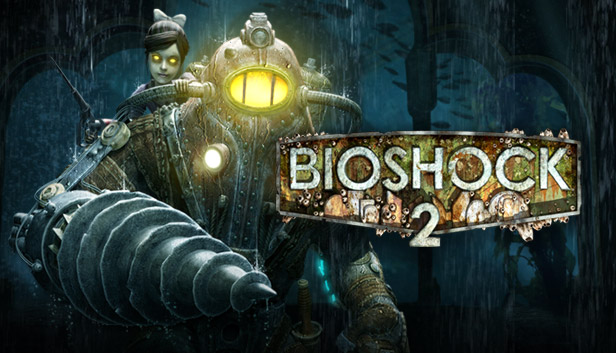
BioShock 2
I slept on BioShock 2 near launch, because the entire internet was calling it a cash-grab waste of time, but its reputation has turned around somewhat in recent years, to the point where some call it their favourite game in the series. Having finally tried it, I partially agree with the reassessment: playing it was enjoyable and certainly not a waste of time. Despite this, my thoughts on it skew more negatively than other games I like less, because literally all of its composite pieces are reused from an existing product. The visuals are jaw-dropping, the imagery is iconic, the atmosphere is overwhelming, and the controls are solid, but the credit for all of that goes to the original game. With most of its new ideas relegated to a chaotic, unbalanced, and somewhat unnecessary multiplayer mode, BioShock 2 can only offer refinement or adulteration of what already exists.
Most of the refinement is in the gameplay. The ability to use a weapon and a plasmid simultaneously, and the greater variety of threats (both of which I’d previously attributed to BioShock Infinite) make for deeper, more consistently engaging gameplay. There are now recurring segments in which you’re tasked with defending a Little Sister, and while they inevitably become repetitive, they also ensure the usefulness of the numerous trap-style armaments. Additionally, the idiotic Vita-Chamber mechanic (in which all enemies remain damaged/defeated after you die and respawn, so the game can be beaten through sheer attrition) can now be disabled. This sounds like a massive improvement, but the defence segments are reset by Vita-Chamber use anyway, and the new Big Sister enemies exclusively attack once you’ve drained all of your resources on a defence segment, which is extremely unfair without Vita-Chambers enabled, so either option is still imperfect.
The Vita-Chamber/Big Sister dichotomy is an example of the biggest factor separating BioShock 2 from its predecessor: context. The first game was indisputably horror-flavoured, and because the sequel uses all of the same components, it appears to be so as well. But it’s only mildly frightening at best, because a) you’re exploring an entirely familiar environment, and b) you’re controlling the biggest source of the first game’s horror – a walking tank whose first on-screen action is crushing a man’s skull underfoot. The narrative suffers in a similar way. On its own merits, it’s an engaging tale full of memorable moments and dialogue that’s superbly written and voiced. But it’s also full of shallow one-upmanship and distracting retcons that all rely on telling the audience, “This was all totally here before; you just didn’t see or hear about it.” If the game was using material of its own creation, much of this wouldn’t matter, and it would be seen as another classic. Instead, it’s a good game whose quality will forever have an asterisk beside it.